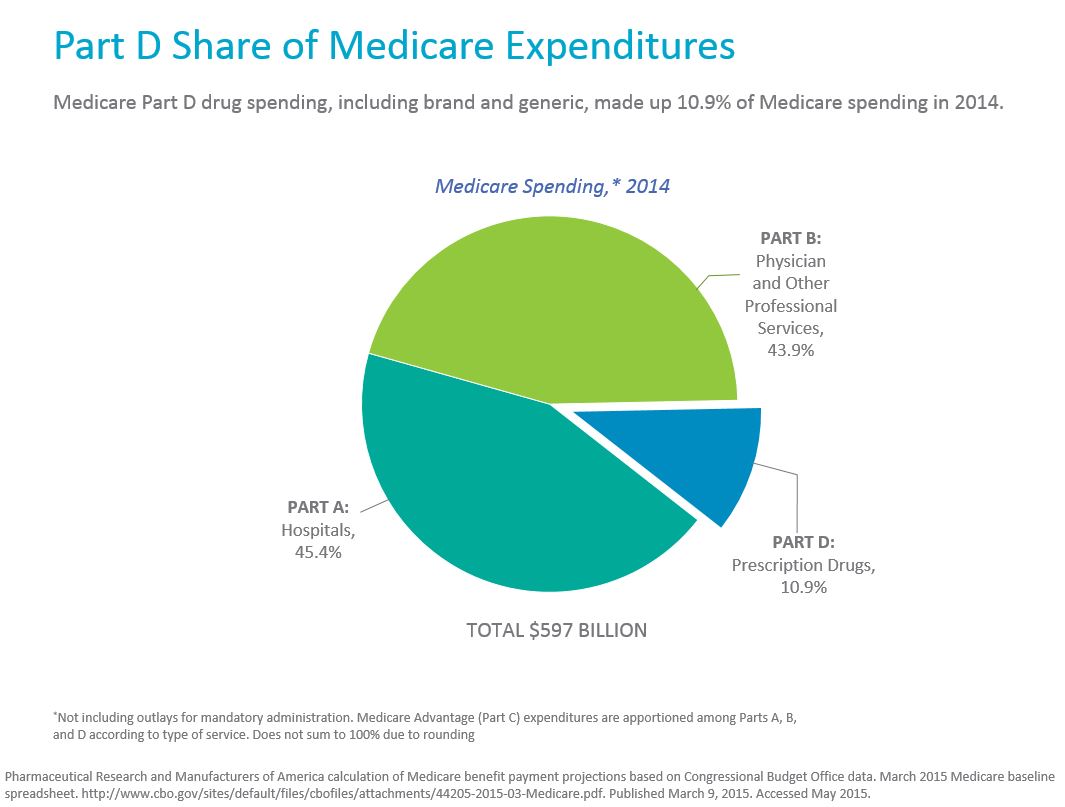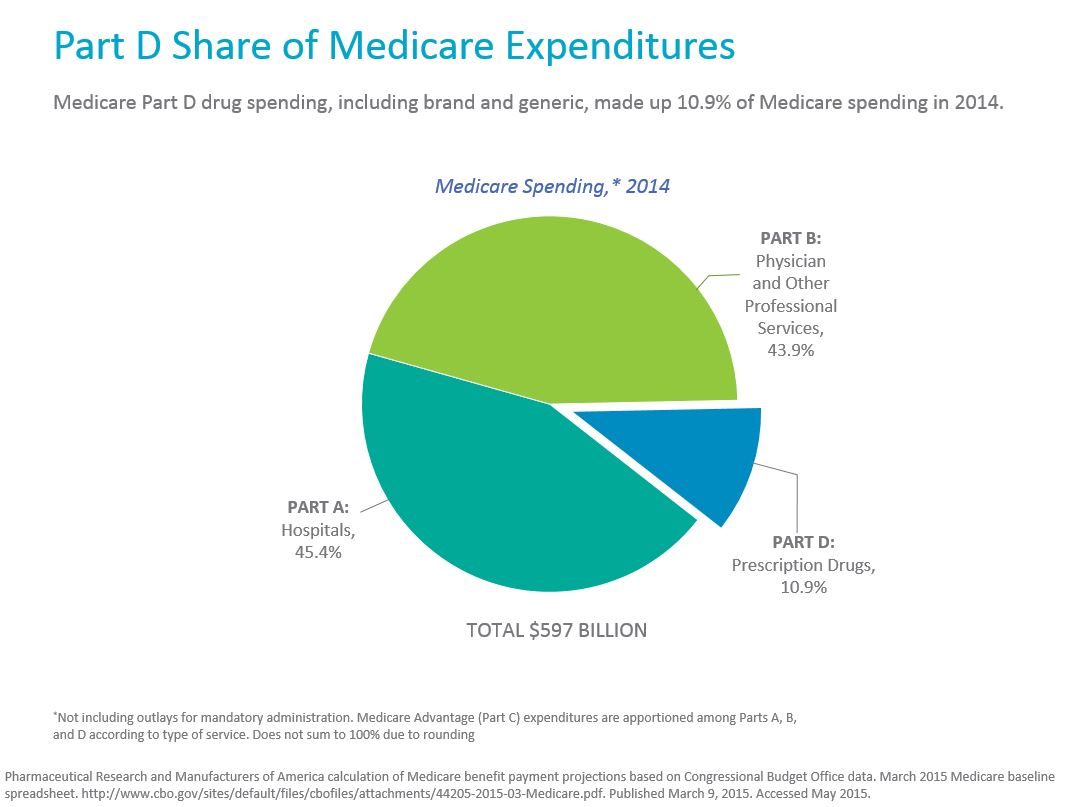Today, the Centers for Medicare & Medicaid Services announced that average monthly premiums for Medicare Part D prescription drug coverage in 2016 will remain stable at an estimated $32.50 per month. This reflects the fact that Part D is a robust marketplace and continues to work to keep costs low for both beneficiaries and taxpayers because of substantial competition and negotiation in the program.

Recent cries from physicians at the Mayo Clinic and others ignore the evidence on Part D’s success and continue to promote policies that would hurt beneficiaries and limit patient access to needed medicines.
Here are 4 key points to know about today’s premium announcement and the Part D program overall:
- Part D Offers Affordable Access to Prescription Drug Coverage
Medicare Part D continues to provide beneficiaries with access to affordable prescription drug coverage. Today’s announcement of stable monthly premiums (about half of original projections) – which have remained between $30 and $32 since 2011 – is further evidence of the program’s success.
- Medicare Part D is a Success, Saving Money for Both Beneficiaries and Taxpayers
Total Part D costs are $349 billion (or 45 percent) less than initial CBO projections for 2004-2013 and Part D was only 10.9 percent of total Medicare spending in 2014. Additionally, since Part D’s inception generic utilization rates have steadily increased from 54 percent in 2005 to 85 percent in 2014.
- Use of Medicines in Part D Helps Decrease Spending in Medicare Parts A and B
Due to a growing body of evidence, in 2012 CBO began recognizing that increases in Part D prescription drug use lead to offsetting reductions in spending for medical services in Parts A and B. Newer research continues to confirm this point and has also found that Part D is associated with improved health outcomes and reduced mortality. Part D is a key part of the solution to help Medicare beneficiaries live longer, healthier lives while also working to bend the cost curve for Parts A and B.
- Competition and Negotiation in Medicare Part D Work
The Part D program is unique in that private plans submit competitive bids each year to determine the cost of the benefit, rather than government-set pricing. Private Part D plans compete to deliver affordable coverage for beneficiaries while also providing value for taxpayers. Medicare Part D plans negotiate significant discounts and rebates with drug manufacturers to achieve savings on medicines, and use them to help reduce premiums, deductibles and cost-sharing for beneficiaries. The Medicare Trustees report that rebates on brand medicines are “substantial” and that average rebate levels have increased each year of the program.




